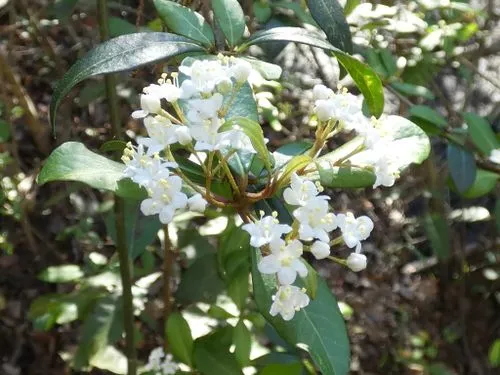List of Pennsylvania Milkweeds
Pennsylvania Milkweed Species to Include in your Butterfly Garden
There are ten species of Pennsylvania milkweeds (Asclepias spp.) and one species, red milkweed (Asclepias rubra) that used to be present in Pennsylvania and is considered “historic” to the state. Milkweeds are an important host species for Monarch, Queen, and Soldier Butterflies. The Monarch butterfly in particular uses the cardenolides found in the milky sap of milkweeds to give an unpleasant taste to predators. These plants are also an important nectar source to all insects visiting your pollinator garden.
1. Clasping Milkweed (Asclepias amplexicaulis), a Milkweed for Sandy Soils
Clasping Milkweed (Asclepias amplexicaulis): Clasping milkweed is located in the central and eastern counties of the state (Kartesz 2015). In the wild, clasping milkweed grows in dry woodlands, prairies, meadows, and roadsides that have sandy or gravelly soil. Growing up to 3 feet tall, this milkweed has greenish-pink, red, brown, to purple flowers that bloom from March to September.
In your Pennsylvania butterfly garden, this milkweed is hardy in zones 3-9 and requires full sun to part-shade and moist to dry sandy soils. Seeds of clasping milkweed can be purchased in the McMullen House Bed & Breakfast Garden Shop.
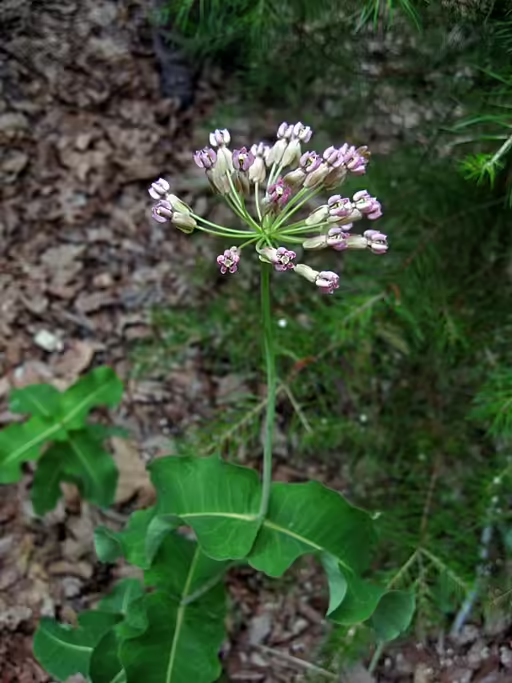
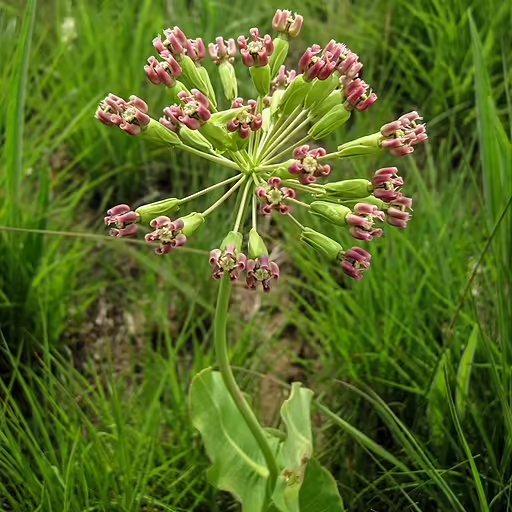

2. Poke Milkweed (Asclepias exaltata), a Milkweed for Shade and Moist Soils
Poke Milkweed (Ascelpias exaltata): Poke milkweed is located throughout Pennsylvania (Kartesz 2015). In the wild, poke milkweed grows in moist woods, roadsides, and the edges of woods. Growing from 2 to 6 feet tall it is one of the taller milkweeds in Pennsylvania and has flowers that are white to green with accents of rose, purple, or blue. Blooming occurs from May to August.
In your Pennsylvania butterfly garden, this milkweed is hardy in zones 3-9 and requires part-shade to full shade and moist soil. For shade gardens, this is a choice milkweed. Seeds of poke milkweed can be purchased in the McMullen House Bed & Breakfast Garden Shop.


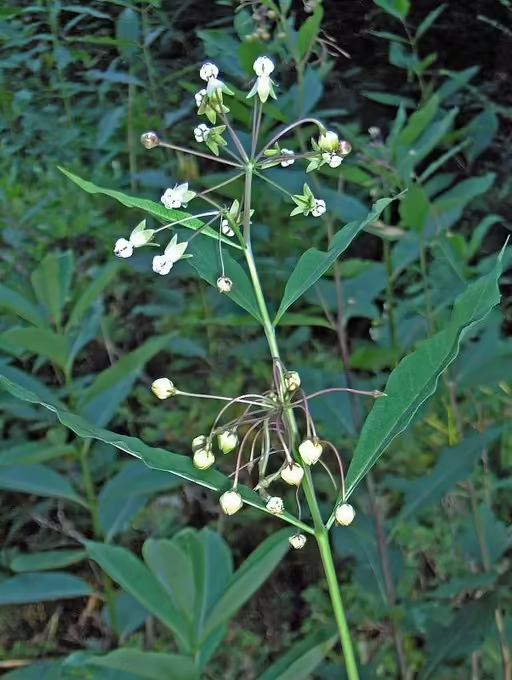
3. Swamp Milkweed (Asclepias incarnata), a Milkweed for Moist Soils
Swamp Milkweed (Asclepias incarnata): Swamp milkweed has two subspecies, ssp. incarnata and ssp. pulchra. The former is native throughout Pennsylvania (hardy in zones 3-9), while the latter is found in the southeastern counties of the state (hardy in zones 4-9). Like the name suggests this plant is found in wet places such as the shores of streams, lakes, ponds, and other wetlands. However, as a landscape plant it can exist in drier places. The flowers are variable and are generally a pink to red color, but there is also a white cultivar (pictured below).
In your Pennsylvania butterfly garden, the species overall is hardy in zones 3-9. However, in the horticultural trade you will likely get subsp. incarnata, which is hardy in zones 3-9. This milkweed requires full sun to partial shade and well-drained soil. Seeds of swamp milkweed can be purchased in the McMullen House Bed & Breakfast Garden Shop.
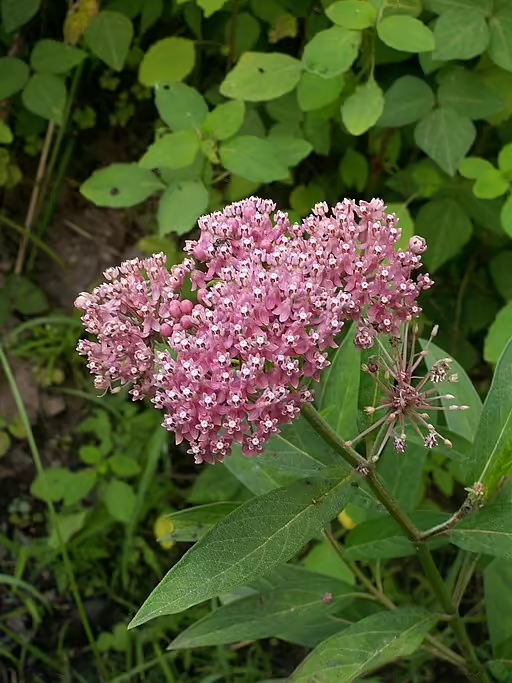

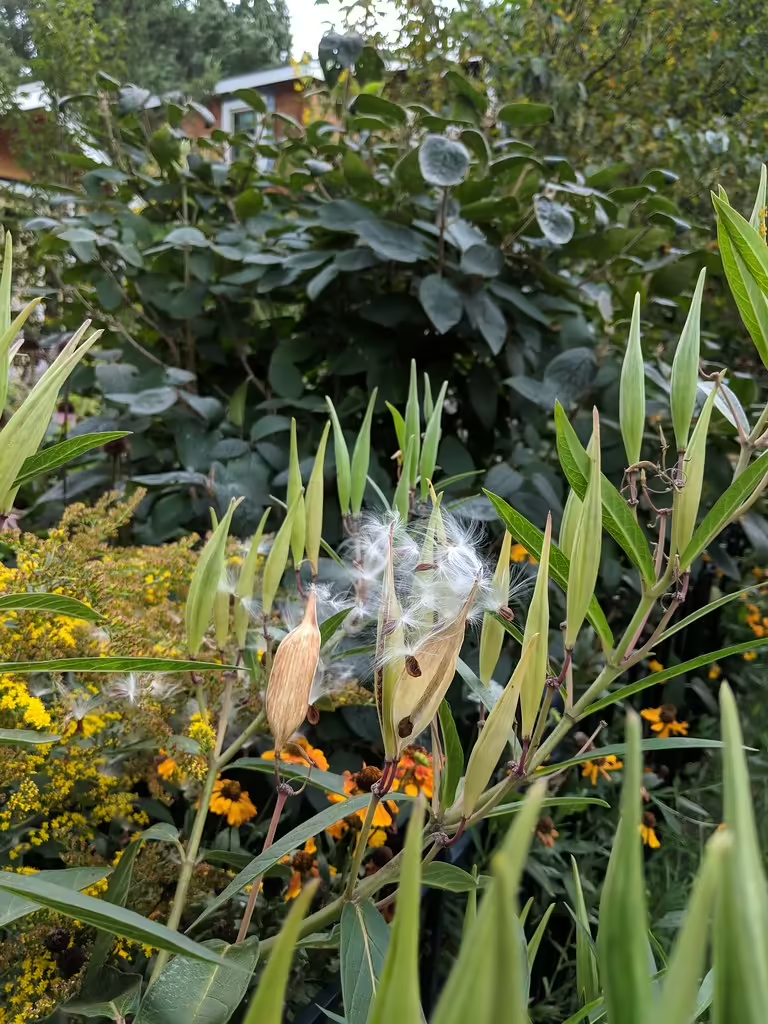
4. Purple Milkweed (Asclepias purpurascens), a Milkweed for Moist Soils
Purple Milkweed (Asclepias purpurascens): Purple milkweed is scattered around Pennsylvania but is generally in the southern counties (Kartesz 2015). In the wild, purple milkweed grows in swamps, woodlands, meadows, and roadsides. Growing up to 6 feet tall, it is one of the larger milkweeds in Pennsylvania, and has flowers, as the name suggests that are generally purple, but can range from rose to pink, or may start out pink and mature to purple.
In your Pennsylvania butterfly garden, this milkweed is hardy in zones 3-8 and generally requires part-shade, but can handle full sun if needed. Soils should be moist and well-drained, but dry soil can be tolerated. Seeds of purple milkweed can be purchased in the McMullen House Bed & Breakfast Garden Shop.


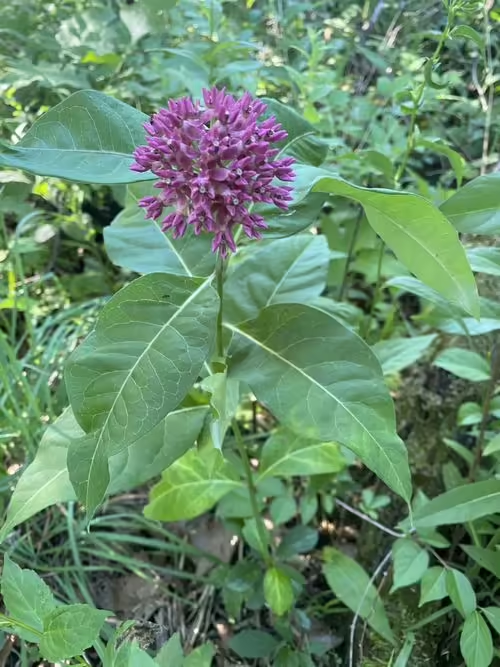
5. Four-leaf Milkweed (Asclepias quadrifolia), a Milkweed for Dry Rocky Soils
Four-leaf Milkweed (Asclepias quadrifolia): Four-leaf milkweed is located throughout Pennsylvania (Kartesz 2015). In the wild, four-leaf milkweed grows in open areas such as roadsides, pastures, and prairies that have some disturbance. Growing from 1 to 3 feet tall, the flowers range from white to pink in color and bloom from April to July.
In your Pennsylvania butterfly garden, this milkweed is hardy in zones 5-8 and prefers places where it can enjoy full sun or part-shade and dry rocky soils.
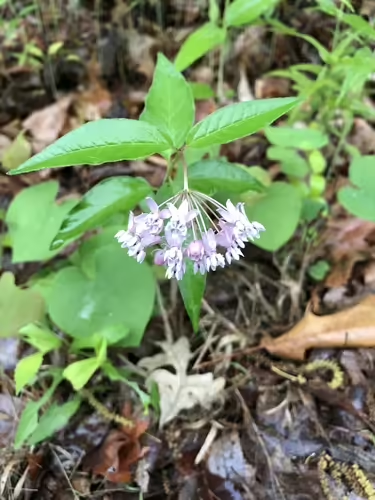


6. Common Milkweed (Asclepias syriaca), a Milkweed for all Soils
Common Milkweed (Asclepias syriaca): Common milkweed is located throughout Pennsylvania and is found in open areas such as fields, pastures, and roadsides, where it can receive full sun. The flowers range from pink, greenish-purple, greenish-white, to white and bloom from June to August.
In your Pennsylvania butterfly garden, common milkweed is hardy in zones 3-9 and requires full sun to part-shade and any type of soil. Seeds of common milkweed can be purchased in the McMullen House Bed & Breakfast Garden Shop.
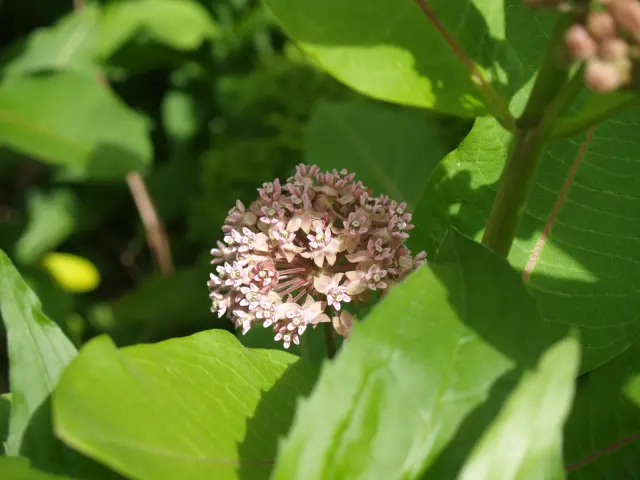

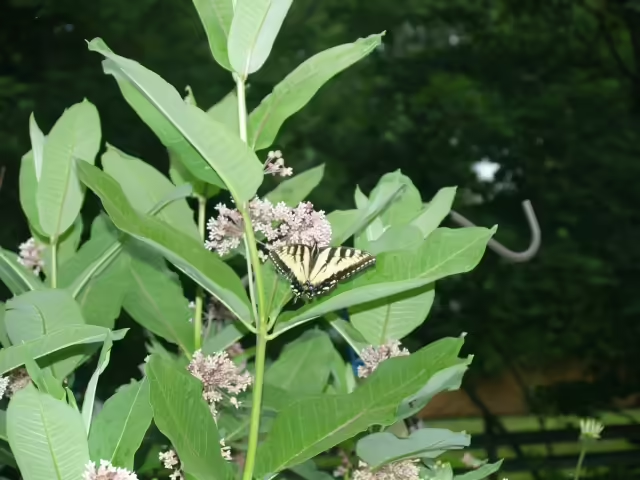
7. Butterfly Weed (Asclepias tuberosa), a Milkweed for all Soils
Butterfly Weed (Asclepias tuberosa): Butterfly weed is one of the most common for butterfly gardeners on the east coast of the United States. In Pennsylvania, subspecies interior and tuberosa occur. Both subspecies essentially occur throughout the state, though subsp. interior is more scattered in distribution. In the wild, butterfly weed grows in open areas with full sun such as fields, roadsides, and open woods. Growing from 1 to 3 feet tall, it has characteristically orange flowers that bloom throughout the summer and sometimes into the autumn.
In your Pennsylvania butterfly garden, this milkweed is hardy from zones 3-9 and requires full sun in any type of soil condition. This is one of two milkweeds in North America that does not have milky sap. Seeds of butterfly weed can be purchased in the McMullen House Bed & Breakfast Garden Shop.
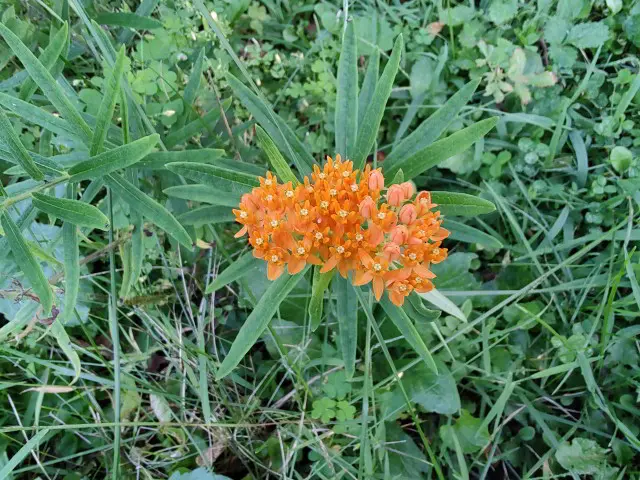
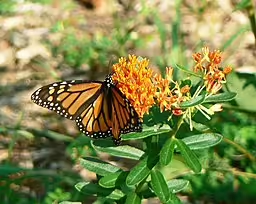

8. Red-ring Milkweed (Asclepias variegata), a Milkweed for Dry Sandy Soils
Red-Ring Milkweed (Asclepias variegata): Red-ring milkweed is considered to be rare and is located in the eastern half Pennsylvania (Kartesz 2015). In the wild, red-ring milkweed grows in open disturbed areas such as thickets and roadsides. Growing from 1 to 4 feet tall, it has white colored flowers with a ring of purple to red at the base. The flowers bloom from May to July.
In your Pennsylvania butterfly garden, this milkweed is hardy in zones 3-9 and prefers part-sun to light-shade and dry sandy or rocky soils. Seeds of red-ring milkweed can be purchased in the McMullen House Bed & Breakfast Garden Shop.
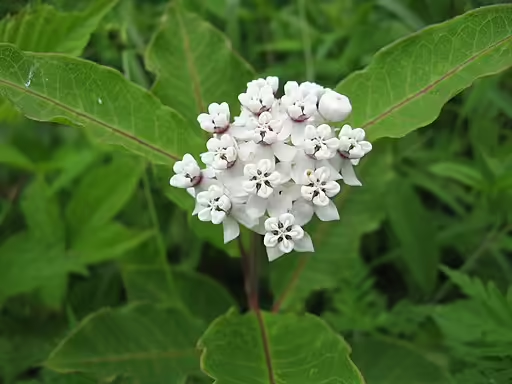
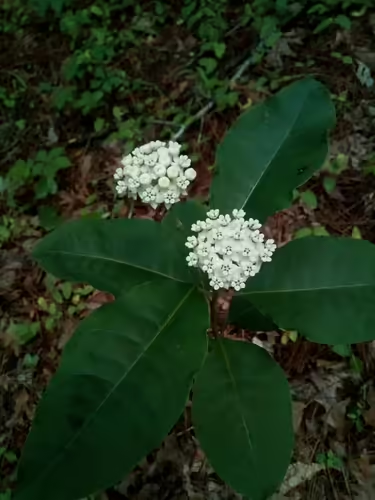

9. Whorled Milkweed (Asclepias verticillata), a Milkweed for Medium to Dry Soil
Whorled Milkweed (Asclepias verticillata): Whorled milkweed is found in the central and eastern counties of the state (Kartesz 2015). In the wild, whorled milkweed grows in open areas such as meadows and fields, where it can take advantage of full sun. Growing from 1 to 3 feet tall, it has green to white flowers that bloom from May to September.
In your Pennsylvania butterfly garden, this milkweed is hardy in zones 3-9 and requires full sun to part-shade with medium to dry soil. Seeds of whorled milkweed can be purchased at the McMullen House Bed & Breakfast Garden Shop.

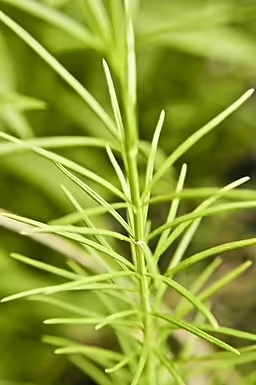

10. Green Comet Milkweed (Asclepias viridiflora), a Milkweed for Medium to Dry Sandy Soils
Green Comet Milkweed (Asclepias viridiflora): Green comet milkweed is scattered around Pennsylvania, but is generally in the central and southern counties (Kartesz 2015). In the wild, green comet milkweed grows in open areas such as meadows and field where there is full sun. Growing up to 3 feet tall, the flowers, which bloom from June to August, begin as a green color but age to become yellow with a purple tinge.
In your Pennsylvania butterfly garden, this milkweed is hardy in zones 3-9 and requires full sun to part-shade with medium to dry sandy soil. Seeds of green comet milkweed can be purchased at the McMullen House Bed & Breakfast Garden Shop.
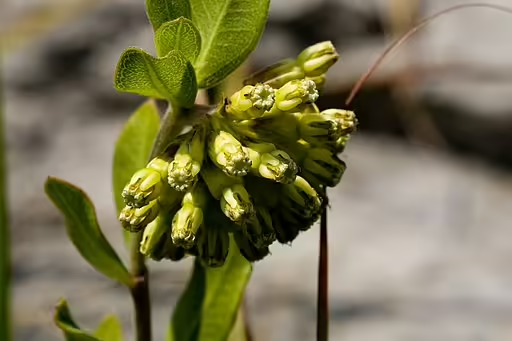
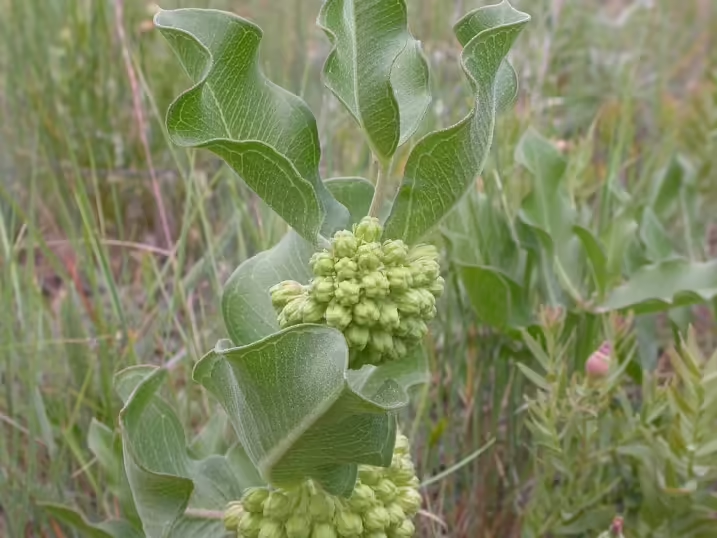

Historic Pennsylvania Milkweed – Red Milkweed (Asclepias rubra), a Milkweed for Moist to Wet Soils
Red Milkweed (Asclepias rubra): Red milkweed is considered to be historic to the southeastern counties of Pennsylvania (Kartesz 2015). In the wild, red milkweed grows in open areas such as bogs, meadows, and pine barrens. Growing from 1 to 3 feet tall, the flowers range from pink, purple, red, to lavender, and bloom from May to August.
In your Pennsylvania butterfly garden, this milkweed is hardy in zones 6-9 and prefers full sun to part-shade and wet organic soils. By planting this species in your Pennsylvania garden, this species could once again be in Pennsylvania.
When selecting your Pennsylvania milkweed, be sure to make sure that it grows in your zone and habitat.
References
- Kartesz, J.T. The Biota of North America Program (BONAP). 2015. Taxonomic Data Center. Link to website. Chapel Hill, N.C. [maps generated from Kartesz, J.T. 2015. Floristic Synthesis of North America, Version 1.0. Biota of North America Program (BONAP). (in press)]
